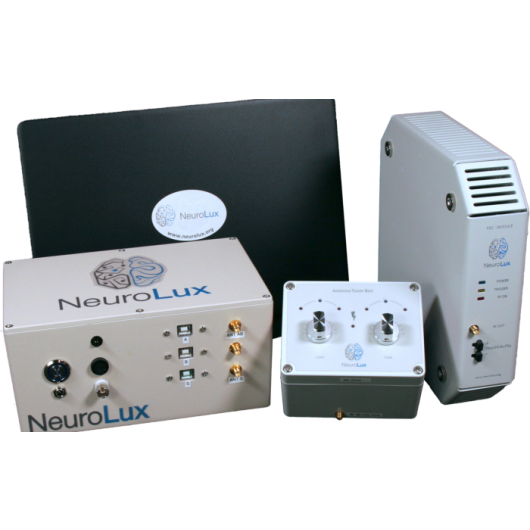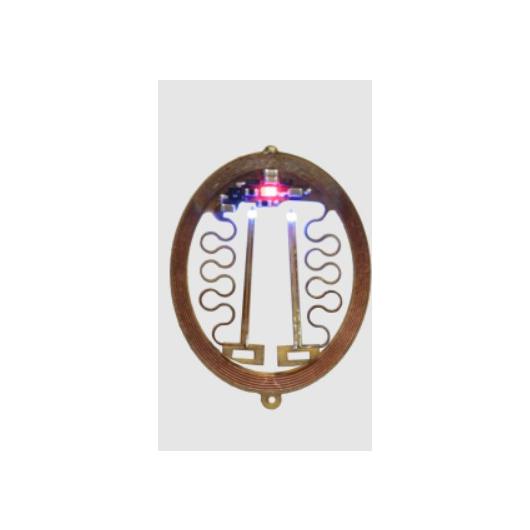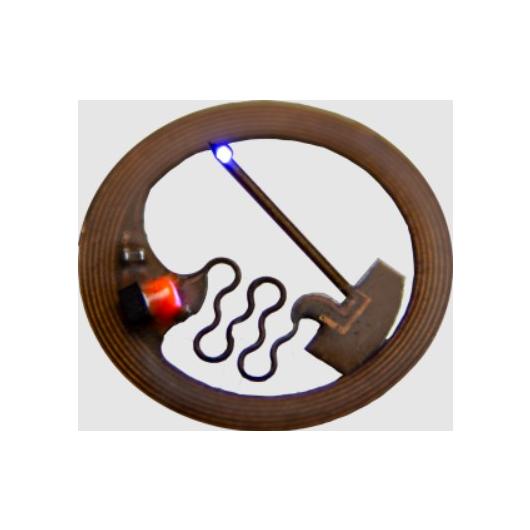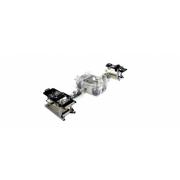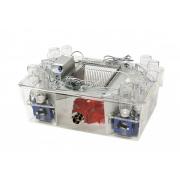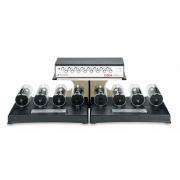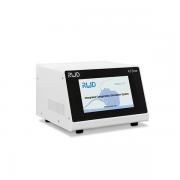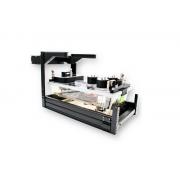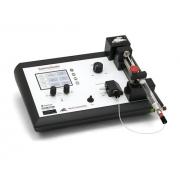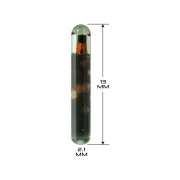



NeuroLux - battery-free wireless optogenetics implants for lab animals
NeuroLux system provides tools with no external antennas, batteries, fiber optic cables, or head mount. The implants have an ultra lightweight construction (0.02 g), which allows subjects to move naturally as individuals or as interacting members of social groups.
With NeuroLux user-friendly GUI, researchers can select wavelength and program pulse frequency and duration for optogenetics stimulation/inhibition. Multiple colors for LEDs are also available to study various behaviors. Better yet, our system is compatible with any TTL input system.
With the wireless battery-free operation, NeuroLux implants have unlimited operational lifetimes. The thin, flexible form factors allow the device to affix on top of the subject’s skull for up to fourteen months. NeuroLux platform provides low-cost hardware packages that are customizable to meet the needs of any laboratory environments. The technology is simple and easy to use, which bypasses the need to invest in and learn how to operate the standard optoelectronic hardware.
NeuroLux unilateral deivce
The brain implantable device mounts sub-dermally on top of the animal’s skull for chronic stability in operation without any observable adverse effects on the animal movement, brain tissue, or general social behavior. It also incorporates a red indicator LED to provide a convenient indicator of operation.
Size: 10.5 x 1.3 mm (diameter x thickness)
Weight: 30 mg or less
Wavelength : 470nm – default (blue), 530nm (green), 590nm (yellow) & 630nm (red)
LED probe length: 2, 4, 6 mm
NeuroLux bilateral device
The newly released bilateral device mounts sub-dermally on top of the animal’s skull, incorporating two probes with a uLED on each end to deliver simultaneous bilateral stimulations into two distinctive target regions.
Size: 11.5 x 10.5 x 1.3 (L x W x thickness)
Weight: 30 mg or less
Wavelength: 470nm – default (blue), 530nm (green), 590nm (yellow) & 630nm (red)
LED probe length: 2, 4, 6 mm
NeuroLux spinal device
The spinal device flexibility, lightweight construction, and open oblong design with a single µ-LED tethered centrally at the probe tip allow for easy manipulation and robust operation.
Size: 10 x 5 x 1.3 mm (L x W x thickness)
Weight: 20 mg or less
Wavelength: 470nm (blue), 530nm (green), 590nm (yellow), 630nm (red)
Wireless battery free fully implantable multimodal recording and neuromodulation tools for songbirds. Nature Communications, 12(1), 1968
Ausra, J., Munger, S. J., Azami, A., Burton, A., Peralta, R., Miller, J. E., & Gutruf, P. (2021).
Wireless, battery-free, subdermally implantable platforms for transcranial and long-range optogenetics in freely moving animals. Proceedings of the National Academy of Sciences, 118(30)
Ausra, J., Wu, M., Zhang, X., Vázquez-Guardado, A., Skelton, P., Peralta, R., Avila, R., Murickan, T., Haney, C. R., Huang, Y., Rogers, J. A., Kozorovitskiy, Y., & Gutruf, P. (2021).
Wireless, battery-free subdermally implantable photometry systems for chronic recording of neural dynamics. Proceedings of the National Academy of Sciences, 117(6), 2835–2845
Burton, A., Obaid, S. N., Vázquez-Guardado, A., Schmit, M. B., Stuart, T., Cai, L., Chen, Z., Kandela, I., Haney, C. R., Waters, E. A., Cai, H., Rogers, J. A., Lu, L., & Gutruf, P. (2020).
Fully implantable optoelectronic systems for battery-free, multimodal operation in neuroscience research. Nature Electronics, 1(12), 652–660
Gutruf, P., Krishnamurthi, V., Vázquez-Guardado, A., Xie, Z., Banks, A., Su, C.-J., Xu, Y., Haney, C. R., Waters, E. A., Kandela, I., Krishnan, S. R., Ray, T., Leshock, J. P., Huang, Y., Chanda, D., & Rogers, J. A. (2018).
Optogenetic induction of colonic motility in mice. Gastroenterology, 155(2), 514-528.e6.
Hibberd, T. J., Feng, J., Luo, J., Yang, P., Samineni, V. K., Gereau, R. W., Kelley, N., Hu, H., & Spencer, N. J. (2018).

